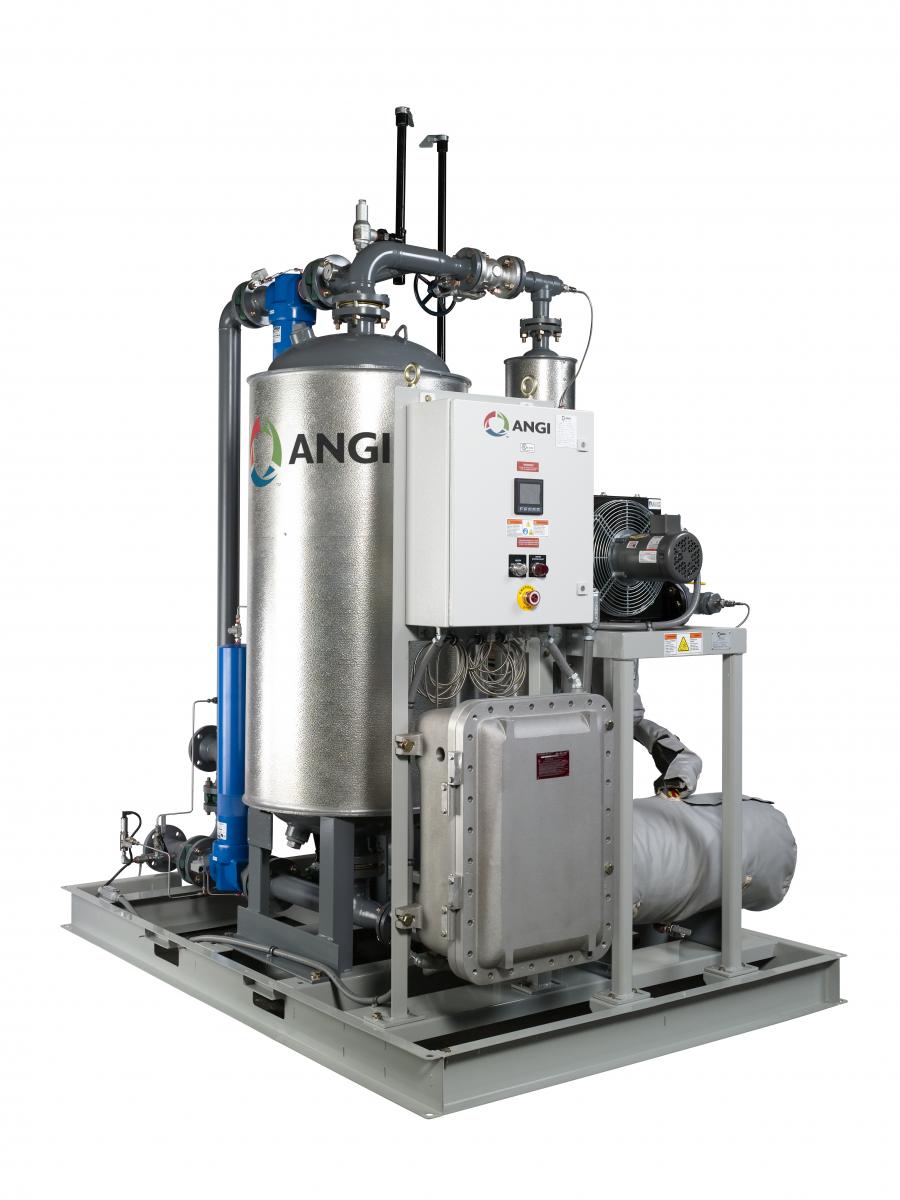Proud to be Powered by Vontier. Sharing a united vision that is driven by innovation. Find out more
Natural gas dryers remove water vapor prior to storing or using natural gas for a vehicle fuel. High water content can cause blockage of CNG in fueling systems and can contribute to corrosion in storage vessels and piping. The need for a dryer is determined by the water content of the incoming gas and the minimum ambient temperature.
ANGI typically provides dryers that operate on the low pressure side of the compression process. The dryer uses molecular sieve adsorbent desiccants to remove water vapor to extremely low levels. After operating for a period of time, the dryer has removed so much moisture that it requires regeneration (heat evaporation process) or replacement of the desiccant. Dryers typically include a hygrometer, which identifies when the desiccant is completely saturated.
ANGI can provide a number of standard drying technologies:
- Non-Regenerating Inlet Dryers: These have large volumes of desiccant. When the dryer can no longer remove enough water, the desiccant must be replaced.
- Regenerating Inlet Dryers: These are similar to non-regenerating inlet dryers, but this type is provided with a regeneration system that can periodically remove the water from the desiccant. The additional equipment includes a heater, blower, and condenser. After the regeneration process, the natural gas will have very low water content.
- Twin-tower, Fully Automatic Regenerating Dryers: These units have two drying vessels. While one vessel is removing water from the lower pressure natural gas, the other tower is being regenerated. The two vessels are automatically switched so that the drying process is continuous.
ANGI can also custom engineer a drying process for a specific application.
